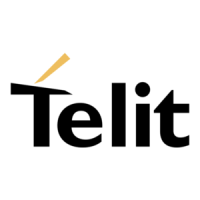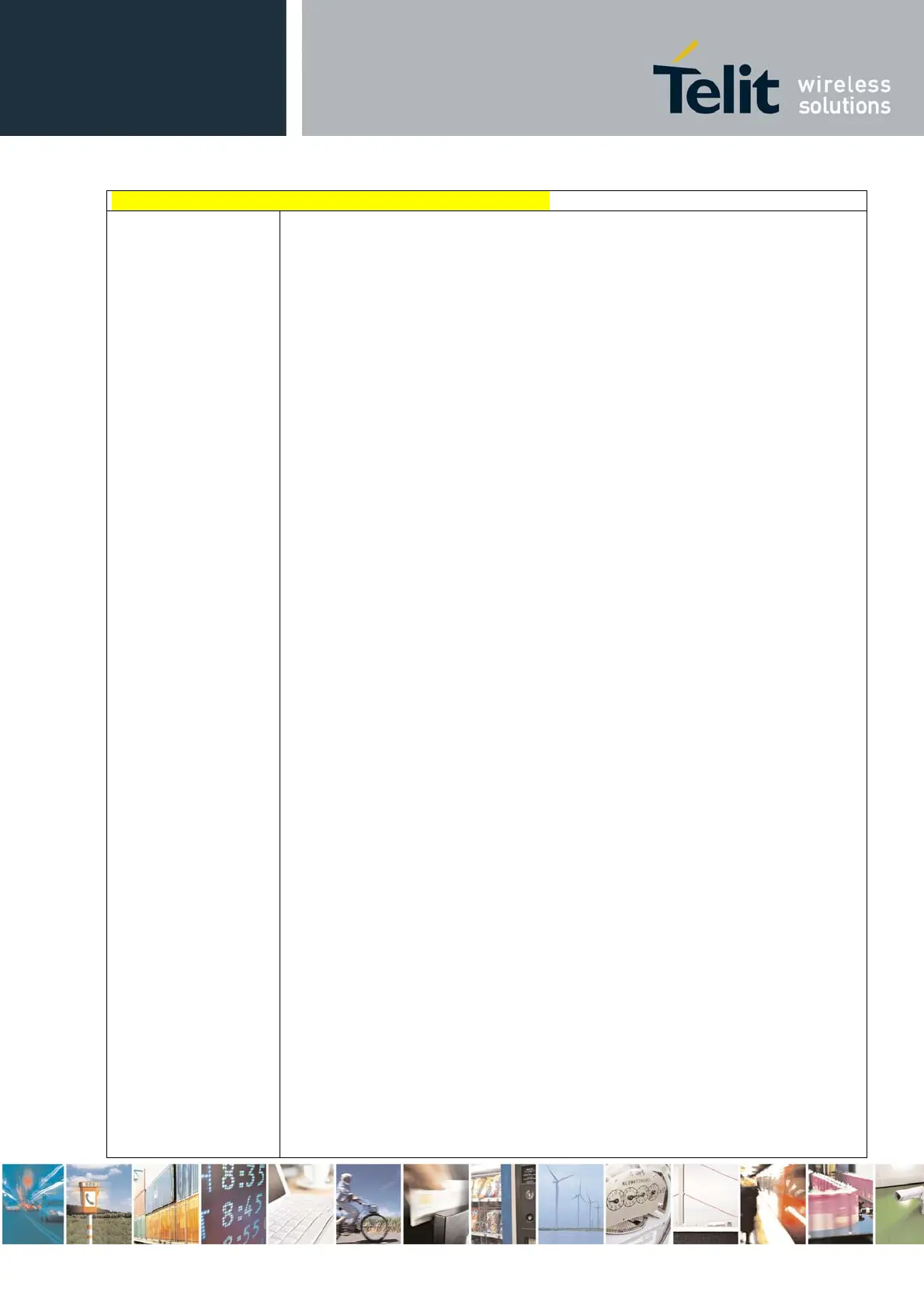HE863 family AT commands reference guide
80377ST10083a Rev.6 – 2012-11-12
Reproduction forbidden without written authorization from Telit Communications S.p.A.- All Rights Reserved. Page 115 of
229
+CNMI - New Message Indications To Terminal Equipment
<length> - PDU length
<pdu> - PDU message
(TEXT Mode)
+CMT:<oa>,<alpha>,<scts>[,<tooa>,<fo>,<pid>,<dcs>,
<sca>,<tosca>,<length>]<CR><LF><data> (the information written in
italics will be present depending on +CSDH last setting)
where:
<oa> - originating address, string type.
<alpha> - alphanumeric representation of <oa>; used character set should be
the one selected with command +CSCS.
<scts> - arrival time of the message to the SC
<tooa>, <tosca> - type of number <oa> or <sca>:
129 - number in national format
145 - number in international format (contains the "+")
<fo> - first octet of 3GPP TS 03.40/23.040
<pid> - Protocol Identifier
<dcs> - Data Coding Scheme
<sca> - Service Centre address, string type.
<length> - text length
<data> - TP-User-Data
If <dcs> indicates that GSM03.38/23.038 default alphabet is used and
<fo> indicates that GSM03.40/23.040 TP-User-Data-Header-Indication
is not set (bit 6 of <fo> is 0), each character of GSM/WCDMA alphabet
will be converted into current TE character set (see +CSCS)
If <dcs> indicates that 8-bit or UCS2 data coding scheme is used or
<fo> indicates that GSM03.40/23.040 TP-User-Data-Header-Indication
is set (bit 6 of <fo> is 1), each 8-bit octet will be converted into two
IRA character long hexadecimal number (e.g. octet 0x2A will be
converted as two characters 0x32 0x41)
Class 2 messages and messages in the message waiting indication group
(stored message) result in indication as defined in <mt>=1.
3 - Class 3 SMS-DELIVERs are routed directly to TE using unsolicited result
codes defined in <mt>=2. Messages of other data coding schemes result in
indication as defined in <mt>=1.
<bm> - broadcast reporting option
0 - Cell Broadcast Messages are not sent to the TE
1 - If CBM is stored into ME/TA, indication of the memory location is routed to
the TE using unsolicited result code:
+CBMI: <mem>,<index>
2 - New Cell Broadcast Messages are sent to the TE with the unsolicited result
code:
(PDU Mode)
+CBM: <length><CR><LF><PDU>
where:
<length> - PDU length

